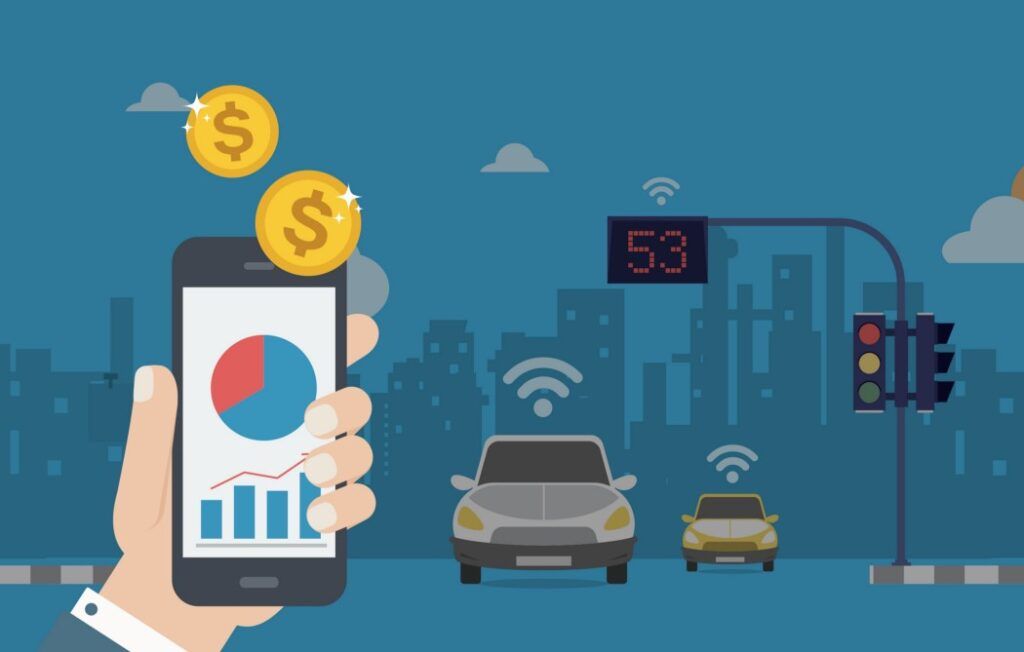Data Analytics Making Auto Insurance Cheaper

How Aviva is using data analytics for auto insurance
We don’t drive cars anymore. We drive computers on wheels. Depending on the model, cars these days sport somewhere between 50 and well over 100 embedded microprocessors. They also generate a huge amount of data. Experts predict that by 2020, connected cars will collect more than 11 petabytes of data a year, including from embedded telematics devices. To put this in context, 11 petabytes of songs playing continuously would last for over 22,000 years, assuming the average MP3 encoding for mobile is around 1MB per minute, and the average song lasts about four minutes. The change in the auto industry comes from making sense of this data. The auto insurance industry is bound to be most impacted by this data – from reimbursement to prevention.
Aviva uses data analytics through a gamified app that helps you get a better price on auto insurance. The idea is that you drive 200 miles and record them on the app. At the end of it, the app assimilates GPS-based data about your cornering, accelerating and braking skills and determines how safe a driver you are by giving you a score. Based on the score, you can avail a discount on your auto insurance. Safe drivers could save up to 20% on their comprehensive car insurance. Steve Treloar, Aviva’s retail director, said: “We’re really pleased with the test phase of ‘Aviva Drive’ and have been encouraged by the feedback we’ve received from motorists who used the app. To help make it even better, we’ve made a number of changes including giving motorists hints and tips on how to improve their driving, and the ability to share scores and badges using social media networks.”
Just like a health app on your smartphone, getting instant feedback on your driving can provide powerful nudges to change behavior – maybe drive more carefully and economically. More importantly, insurers now have the data to understand why an accident happened. Crash reconstructions will be much more accurate, which in turn will both speed up the claims process and can dramatically reduce fraud.
Data analytics is creating and capturing value in the auto insurance industry in several ways: pricing and risk selection, identifying customers at risk of cancellation, identifying risk of fraud, triaging claims, focusing on customer loyalty, identifying outlier claims, transforming the claim process, data management and modelling, identifying potential markets, gain a 360 degree of the customers, provide a personalized experience etc .
In the future, there are multiple venues and use cases for data analytics in the insurance industry. For example,
- Document maintenance: Since a lot of hard copy of documents are still used in Insurance, RFID can be used for document tagging and maintenance.
- Once the repair has been completed, the various sensors of the car can do a self-check to ensure the parts they are connected are in good working condition.
- Feedback: The mobile app will be a much more effective method of collecting feedback from the customers than paper forms and telephone calls.
- Major weather patterns — Based on this Insurance companies can prepare for various catastrophes and improve locality-based underwriting. The data will enable Insurance companies to identify accident-prone weather, roads, driving behavior and combinations thereof. The Insurer can then advise the driver accordingly. For example, the insurer may inform the driver that he ought to avoid a particular route in a particular kind of weather since accident probability of that combination would be 30%.
As connected cars become more popular, this sort of technology will already be installed. Telematics is changing how insurance companies assess risk as it measures individual driver behavior rather than basing it on average group data. It also places data collection and analysis directly in the hands of the insurance company. While traditional data still gives insurance companies useful information for risk profiling, technology-driven data is the way of the future. It’s a win-win situation for both parties. Insurers can more accurately measure risk and, if the odds are in their favor, consumers can benefit from lower insurance rates.




